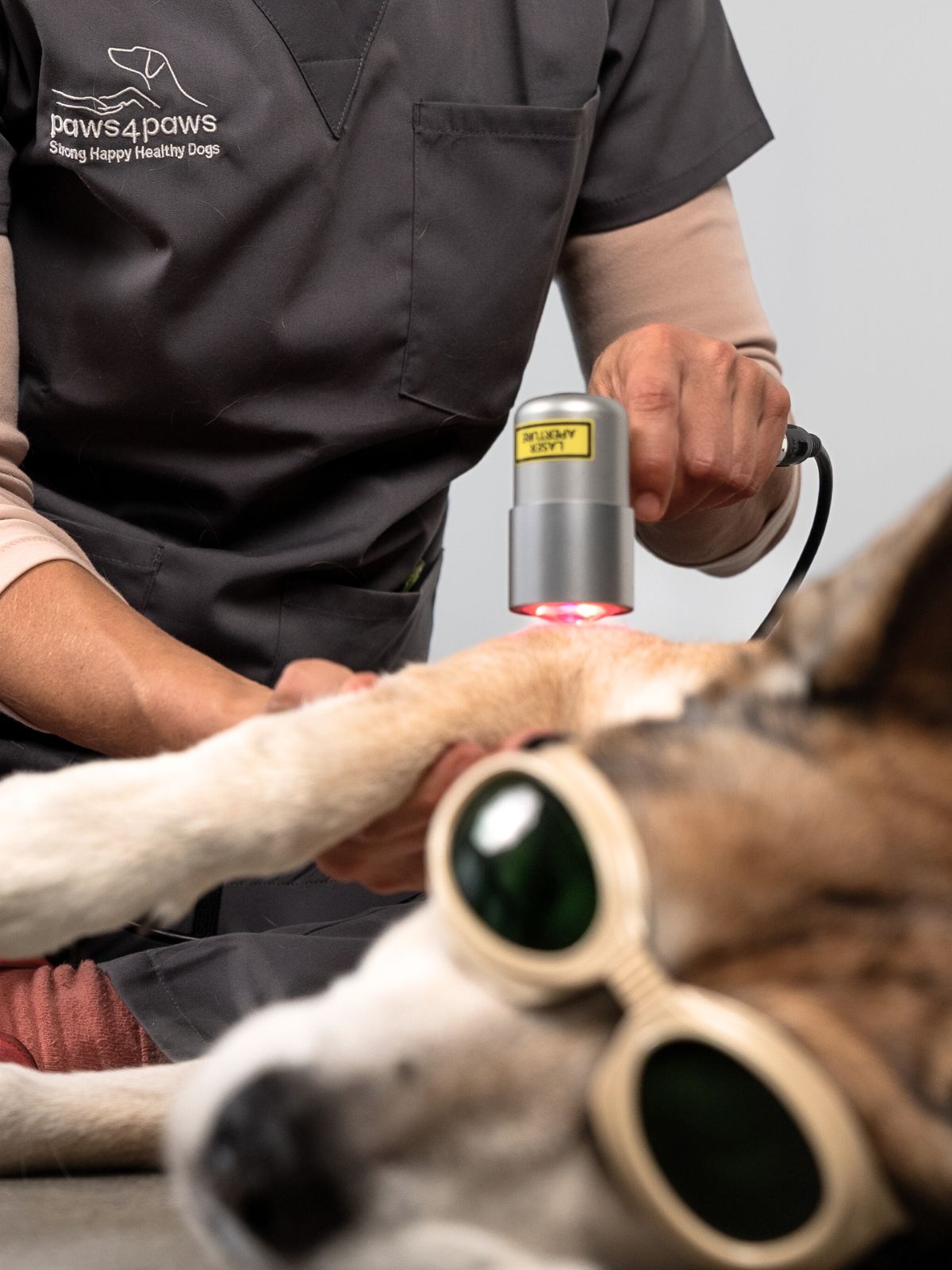Muscle Stiffness in Dogs
In-Home Rehabilitation to Relieve Muscle Stiffness, Improve Mobility, and Restore Comfortable, Functional Movement
Understanding Muscle Stiffness In Dogs?
Muscle stiffness in dogs can significantly affect mobility, comfort, and overall quality of life. It may arise from a range of factors including reduced activity, ageing, overuse, biomechanical compensation, or underlying orthopaedic and neurological conditions. Dogs experiencing stiffness may show signs such as reluctance to move, shortened stride length, difficulty rising, or discomfort during transitions.
Stiffness is often the result of increased muscle tone, myofascial restriction, or prolonged muscular guarding in response to joint instability or soft tissue strain. It is also closely associated with chronic pain—where ongoing discomfort leads to protective tension, restricted movement, and further musculoskeletal dysfunction in a self-perpetuating cycle.
If left unaddressed, muscle stiffness can contribute to altered gait patterns, reduced range of motion, and secondary strain on other joints and tissues. At Paws4Paws, we assess the root causes of stiffness and deliver targeted in-home rehabilitation to restore muscle extensibility, improve movement quality, and reduce pain-related tension.
Rehabilitation for Muscle Stiffness in Dogs?
Effective rehabilitation for muscle stiffness targets the underlying cause while improving tissue quality, mobility, and neuromuscular control. At Paws4Paws, we provide structured, in-home therapy tailored to your dog’s clinical presentation—whether stiffness is secondary to joint pathology, chronic pain, neurological dysfunction, or disuse.
Treatment may include:
-
Soft tissue mobilisation to release muscle tension, break down myofascial adhesions, and improve tissue pliability
-
Remedial massage to increase circulation, reduce protective muscle tone, and alleviate discomfort
-
Stretching and passive range of motion techniques to restore flexibility and joint mobility
-
Photobiomodulation (PBMT) to reduce inflammation, improve local circulation, and modulate pain
-
Therapeutic exercise to rebuild strength, enhance movement control, and prevent recurrence
-
Home exercise programs to maintain flexibility, reinforce in-session gains, and support long-term musculoskeletal health
-
Owner guidance on safe movement, environmental setup, and strategies to reduce movement-related pain
By treating stiffness as both a symptom and a contributing factor in broader musculoskeletal dysfunction, rehabilitation helps restore ease of movement and reduce the physical and behavioural effects of chronic discomfort.
Why Addressing Muscle Stiffness Early Matters
Muscle stiffness is often more than a temporary issue—it can be an early sign of underlying pain, compensation, or mobility decline. If not addressed, stiffness may lead to altered biomechanics, reduced joint range of motion, muscle atrophy, and further discomfort during daily activities. Over time, dogs may become less active, lose strength, and develop secondary strain in other regions of the body.
Early rehabilitation plays a key role in:
-
Interrupting the cycle of pain, tension, and restricted movement
-
Preserving soft tissue flexibility and joint mobility
-
Preventing compensatory gait changes and postural adaptations
-
Supporting neuromuscular coordination and confidence in movement
-
Enhancing your dog’s overall comfort, activity levels, and quality of life
Timely, targeted therapy can prevent chronic musculoskeletal dysfunction and help your dog maintain fluid, pain-free movement well into their senior years.


